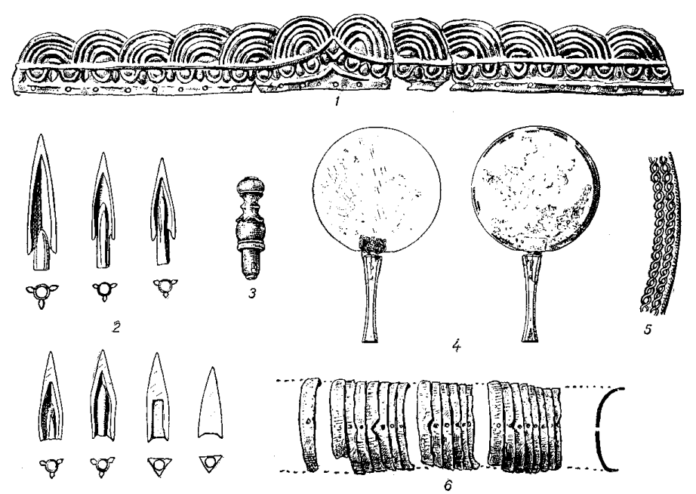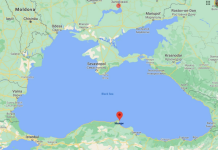Not far from the city of Nikopol in the Dnipro region of Ukraine, on the right bank of the Dnieper River some 80 years ago were two villages – Kut and Grushivka. When in 1950, the decision was made to build the Kahovka Hydroelectric Plant in the area, the villages were moved into a newly created village that was situated in a higher place nearby. The village was given the name of Grushivka after one of the two former ones. In 1951-52, at the time the Kahovka Dam was being built, archaeologists excavated a group of kurgans that stretched through the former village of Kut. There were 41 (forty-one) kurgans in all and as it turned out, some of them dated to the Bronze Age. Kurgan 7 had a very interesting Scythian burial in it. It was only 1.2 meters high but 20 meters in diameter. In the northern part of it there was a catacomb with a vertical shaft 2 meters deep, and short dromos that led to two burial chambers – of a male and a female. The male burial was plundered and ruined by the looters in antiquity, but the female one remained untouched. The golden diadem on the head of the female stressed her high social status. Large bronze mirror with bone handle, and lead spinning whorls were also part of the inventory. Also, on her left arm was a gorytos with 87 arrows. The gorytos with the arrows compelled archaeologists to view the woman as a Scythian female warrior or Amazon.
Dmitry Berezovetz, the head of the excavations, noted that the Kurgan 7 was created in the Bronze Age and had 5 burials in it dating to that era. There were also 5 Scythian burials in the same Kurgan that included the two described above. And this fact makes one wonder about the probability of the Scythians burying their nobles in the burial complexes of a foreign culture. The statement by Herodotus that ‘the Scythians are another people who avoid foreign customs at all costs’ proves that the chances of such a case are close to zero. The burials of the Scythians in the necropolises of the Bronze Age should indicate that they belonged to the same culture as the people of the Bronze Age buried in the kurgan. It is even likely that they were related and the kurgan was their ancestrial necropolis.
The fact of such a mixed burial may serve as yet another argument that the Scythians originated in the territory of present-day Ukraine during the Bronze Age.










